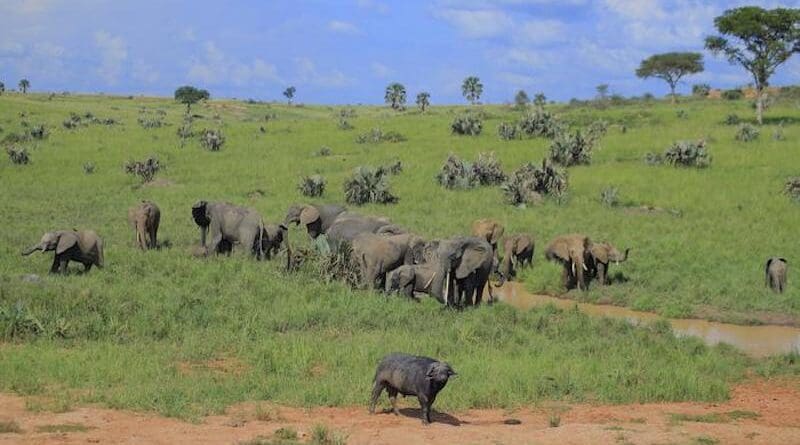Older African Elephants Will Be Most Severely Affected By Changing Climate
Older elephants in East Africa will be most severely impacted by climate change, threatening the long-term survival of this vulnerable African mammal, according to a modelling study by Simon Nampindo at the Wildlife Conservation Society and Timothy Randhir at the University of Massachusetts, published in the open-access journal PLOS Sustainability and Transformation.
African elephants play important ecological roles, creating habitats for other species by felling trees, dispersing seeds, and fertilizing the soil with their dung. However, elephants across Africa are suffering population declines due to habitat loss and conflict with humans, problems that scientists expect to worsen with climate change.
Researchers used historical climate, vegetation, and elephant population census data from 1960 to 2010 to model the effects of habitat and water resources on elephants in the Greater Virunga Landscape — an interconnected set of protected areas in Uganda, Rwanda and the Democratic Republic of Congo. They simulated the effects of three future climate scenarios and different habitat conservation, water management, and climate policies on survival and reproduction for different age groups. They found that changes in temperature and rainfall driven by climate change have the potential to eliminate elephants in the 41-50 and over 50 age groups. Policies that protect vital habitat and conserve water resources could mitigate these impacts. For example, increasing forest and savanna habitats in the Greater Virunga Landscape by 50% would benefit elephants in all age groups.
Older individuals are crucial for the survival of elephant groups, passing down valuable knowledge to younger generations, but these results suggest that this age group will be worst affected by climate change. African elephants require large landscapes and a variety of habitats to thrive, so conserving these iconic animals will require cooperation between nations and communities to protect habitat and water resources, the authors say.

